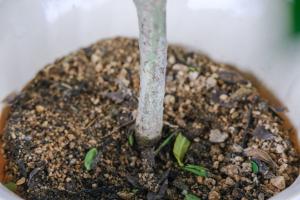How to Start a Successful Plant Shop: A Comprehensive Guide
Starting a plant shop can be a rewarding and fulfilling business venture. With the increasing interest in sustainable living and the benefits of indoor plants, there is a growing demand for plant shops. If you are thinking of starting your own plant shop, here is a comprehensive guide to help you get started.
1. Conduct Market Research
Before starting your plant shop, it is essential to conduct market research. This includes identifying your target market, evaluating your competition, and understanding the current market trends. You could visit other plant shops in your area and take note of their inventory, pricing, and customer service. This information will help you develop a unique value proposition and a competitive pricing strategy.
2. Develop a Business Plan
After conducting market research, you need to develop a business plan. This plan outlines your goals, strategies, financial projections, and management structure. It will also help you secure funding from investors, lenders, or other sources. Your business plan should cover aspects such as marketing, operations, and management policies.
3. Determine Your Business Structure
You need to decide the legal structure of your business. This includes deciding whether you want to operate as a sole proprietor, partnership, corporation, or a limited liability company (LLC). Each structure has its advantages and disadvantages, and you must consult with a lawyer or an accountant for guidance.
4. Choose a Location
Choosing the right location is crucial to the success of your plant shop. You need to select an area with high foot traffic, easy accessibility, and proximity to your target market. You also need to consider factors such as rent, utilities, and parking. You could either lease or buy a storefront, or start an online store with a retail hosting platform.
5. Acquire Inventory
The next step is to acquire inventory for your plant shop. You could source plants and gardening supplies from wholesale nurseries, local farms, or international suppliers. You need to ensure that your inventory aligns with your target market and meets market trends. You should also consider factors such as plant quality, diversity, and price.
6. Set up Your Shop
Once you have acquired inventory, it is time to set up your shop. You need to decorate your storefront with attractive displays, signage, and plants. You also need to invest in equipment such as cash registers, display shelves, and plant stands. You need to ensure that your storefront is inviting, organized, and well-lit.
7. Market Your Shop
The final step is to market your shop. You need to develop marketing strategies that reach out to your target market. This includes advertising in local media, setting up social media accounts, and hosting special events. You also need to provide excellent customer service to retain loyal customers.
Conclusion
Starting a plant shop can be a fulfilling and lucrative business venture. However, it requires careful planning, market research, and implementation. By following this comprehensive guide, you can start your plant shop and thrive in the industry. Remember to stay competitive, innovative, and customer-focused to attract and retain customers.

 how many times do yo...
how many times do yo... how many planted tre...
how many planted tre... how many pine trees ...
how many pine trees ... how many pecan trees...
how many pecan trees... how many plants comp...
how many plants comp... how many plants can ...
how many plants can ... how many plants and ...
how many plants and ... how many pepper plan...
how many pepper plan...
































